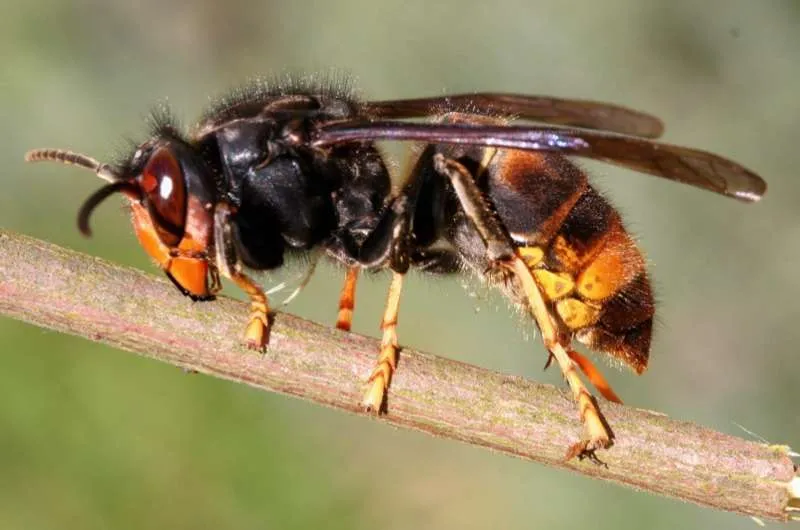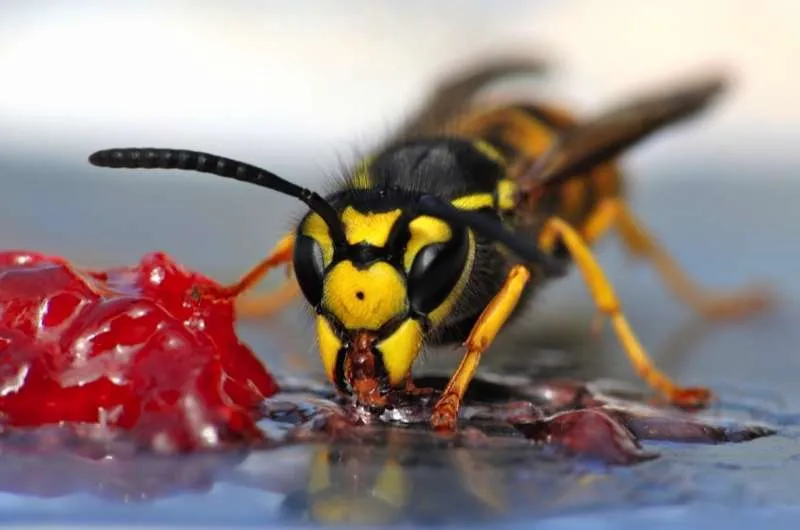1
A wasp for all seasons
Wasp populations fluctuate in two-year and possibly seven-year cycles that are driven by factors related to the biology of wasps and the climate over the preceding year. Cold winters are good for wasps because queens remain in the relative safety of torpor longer, emerging later in spring when there are more resources to support them. Press reports of ‘wasp invasions’ typically appear in late May and June but are usually premature. A native insect having a good year is hardly an invasion!
2
Big buzzer
A two-year-old German wasp nest found in Tasmania in April 2015 weighed a scale-busting 90kg.
3
She's a killer Queen
At the end of summer, a queen wasp mates and then overwinters in torpor. She wakes in spring to find somewhere to build a nest to rear her first female workers, who rapidly take over running the colony. The queen lays more eggs that grow into more workers.These workers make new potential queens by feeding some larvae richer food. Male wasps develop, which then mate with females; the queens overwinter while the males die. As the colony winds down in autumn, the remaining workers also die.
4
Victims of the current climate
Mild winters could mean that colonies start surviving the colder months, continuing to grow and building massive nests. This is already a problem in New Zealand and Australia, which both suffer from introduced wasp species. Meanwhile, climate change could lead to new species reaching the UK. British beekeepers are already on the lookout for the Asian predatory wasp; this bee-killing hornet recently arrived in France from Asia.

5
Social butterflies
9,000 wasp species live in the UK. Of these, just nine are classed as social.
6
Game of drones
The largest social wasp in the UK is the distinctive European hornet. The most likely species you’ll encounter is the common wasp, but the median wasp, the tree wasp, the Saxon wasp, the German wasp and the red wasp can also be frequently encountered in some areas.
7
Feeding frenzzzzzzy
It is the worker wasps that we see out and about in the summer, looking for food. Common wasps feed their larvae on insects, which the workers bring to the nest. The adults consume nectar, ripe fruit and other sugary foods – including jam sandwiches and fizzy drinks.
8
Heavy hornet
Five cm is the maximum length of the largest UK wasp - the European hornet.

9
Aphid hunters
Wasps are predators that control plant pests and enhance biodiversity by preventing common species becoming dominant. One worker wasp can collect over 100 aphids a day, while some wasps will pollinate flowers. They are a vital part of the ecosystem. Social wasps demand our attention, and sometimes not always for the best reasons, but they also deserve our interest and our respect.
Follow Science Focus onTwitter,Facebook, Instagramand Flipboard